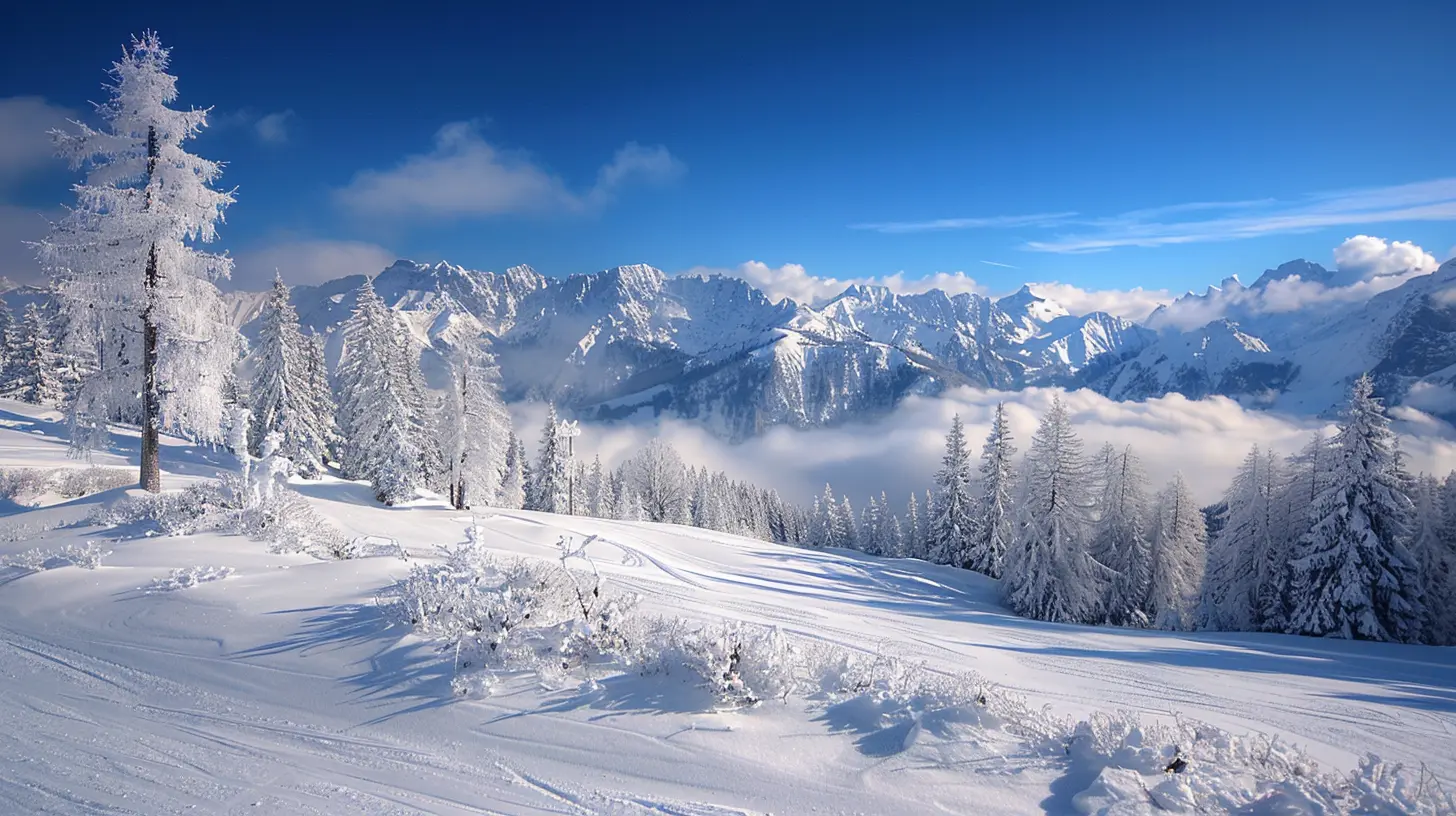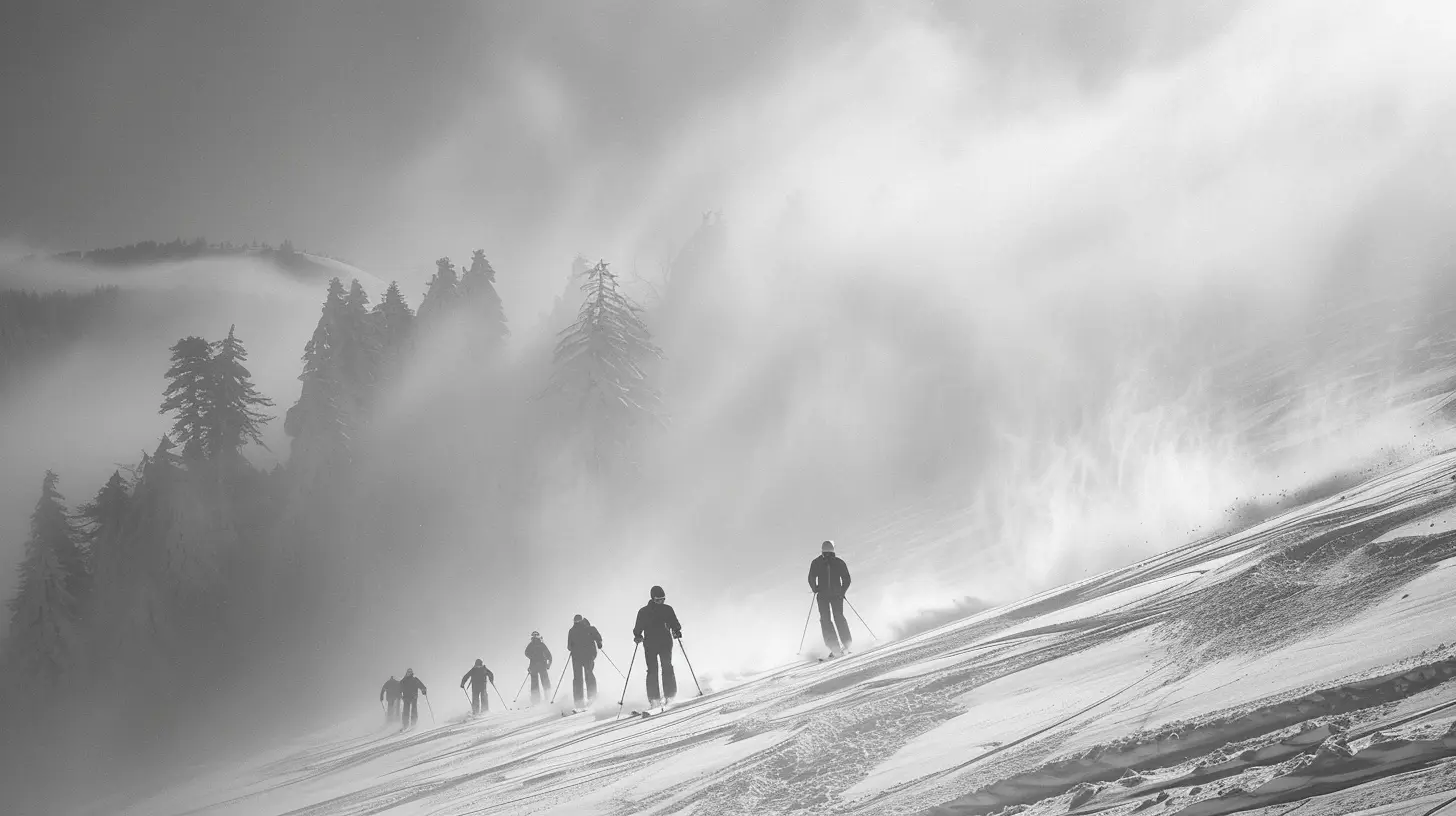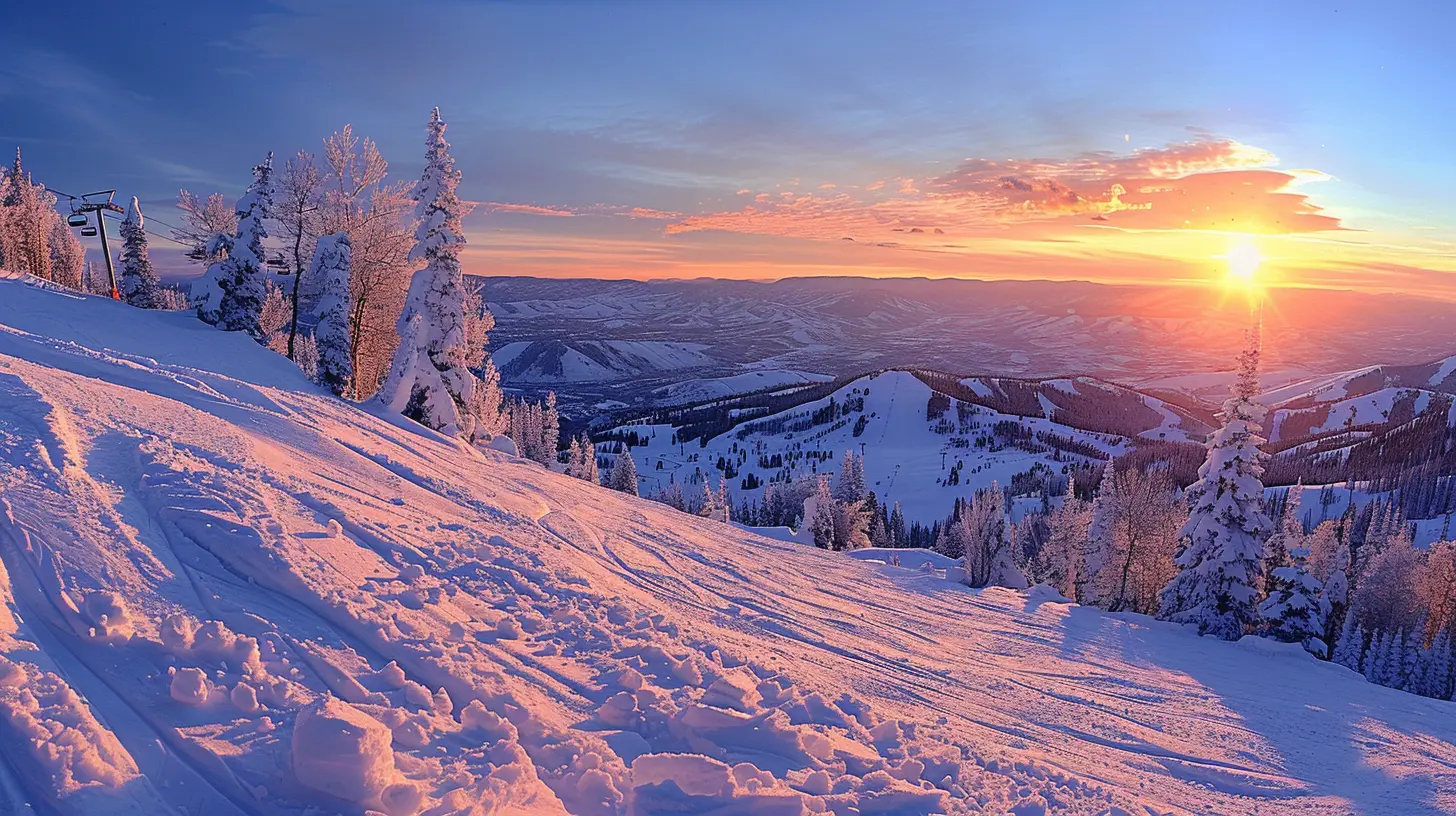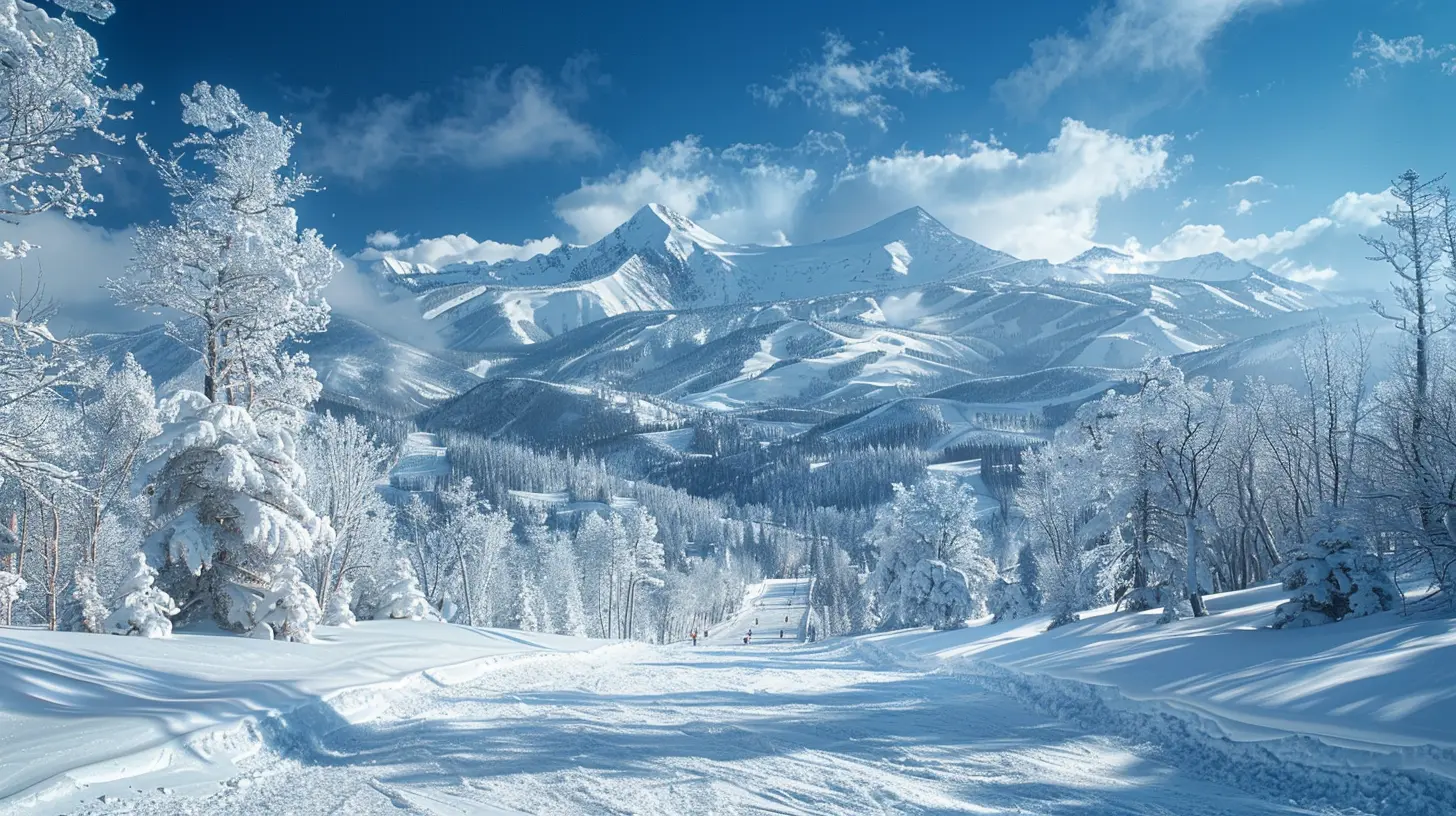The Best Time of Day to Ski for Ideal Snow Conditions
6 July 2025
If you’ve ever raced to the slopes at dawn or strolled in just before lunch wondering if you’re missing out on the “perfect snow,” you're definitely not alone. Timing matters—a lot—especially when you’re chasing that dreamy combo of fresh powder, smooth runs, and fewer crowds. So, when really is the best time of day to ski for ideal snow conditions?
Let’s break it down together, and by the end of this guide, you’ll know exactly when to click into your bindings to make the most of your day on the mountain.
Why "Time of Day" Even Matters for Skiing
You might think snow is snow, right? Nope. Snow changes throughout the day—its texture, temperature, and even how it feels under your skis. Skiing at 8 a.m. isn’t the same as skiing at 2 p.m. And that’s not just beginner talk—it’s something even pros pay close attention to.The snow is a living, breathing part of the mountain. Mother Nature constantly reshapes it, influenced by temperature swings, sunlight, wind, and skier traffic.
Here’s the thing: if snow conditions aren’t ideal, you’re not going to have much fun. You could be battling through crusty ice, sticky slush, or rutted-up rough patches. In short—timing your ski outings is pretty much the hack that elevates good days to unforgettable ones.
Morning: The Early Bird Catches the Corduroy
Fresh Groomed Runs = Heaven
If you've never experienced freshly groomed corduroy, you’re seriously missing out. Most ski resorts groom their trails late at night or early in the morning. So, if you're on the lift for first chair—typically around 8:30 or 9:00 a.m.—you’re in for a treat.These perfectly laid lines of snow feel like buttery velvet under your skis. It’s the kind of surface that makes everyone from beginners to advanced skiers feel like pros. You get smooth, consistent turns. No surprise patches. No chunky snow to catch your edge.
Cold Temps Preserve the Snow
Mornings are usually the coldest part of the day, especially in the mountains. That’s great news because colder temperatures keep the snow nice and dry. Dry snow is your best friend—it’s less sticky, holds its shape better, and makes for faster runs.If you’re skiing in the Rockies or anywhere above 7,000 feet, mornings often offer the driest, most stable snow. Think of it like getting to the bakery just as they open—the goods are fresh, untouched, and still warm (well, in this case, cold).
Midday: Sunshine and Softening Snow
The Sweet Spot (10:30 a.m. – 12:30 p.m.)
This is where it starts to get interesting. As the sun climbs, it begins warming up the slopes. Depending on the resort’s elevation and exposure (north-facing vs. south-facing slopes), the snow starts softening.And guess what? That can be amazing—especially if you’re not a huge fan of icy terrain.
This is especially true in spring or late-season skiing. In the early morning, the snow can be rock-solid thanks to overnight freezing. But give it a couple of hours, and it softens into that perfect creamy, edgeable consistency.
Follow the Sun
Pro tip? “Chase the sun.” Start on east-facing slopes that get sun first, then work your way to south-facing. Why? These slopes soften up earlier, and that means better grip and less chatter on turns.Skiers and snowboarders often call this game of following soft snow "corn hunting"—because once the icy glaze melts, the snow forms a granular texture that skis like a dream.
Afternoon: Slush, Ruts, and Crowds (But Still Some Fun!)
Snow Gets Heavy
By mid to late afternoon, especially on sunny days or during spring conditions, the snow starts to morph—again. And let’s be honest, it’s usually not for the better. Snow becomes heavy, wet, and slushy. It slows you down and demands more effort to control your skis.You know that feeling when you're dragging your feet through deep beach sand? Yeah, kind of like that.
Moguls Start to Form
All those skiers tearing up the slopes since morning? They’ve been leaving their marks behind. By 2:00 p.m., you’ll likely find chopped-up terrain and moguls (those bumpy, uneven mounds). If that’s your jam, go for it. But for a lot of us, it’s the beginning of the “ehhh” hours.Weather Can Turn
Afternoon weather is kind of like a teenager—unpredictable. Clouds roll in. Winds kick up. Snow falls, sometimes with little warning. While fresh snow sounds good in theory, it can drop visibility and change the surface in minutes.Powder Days: The Early Bird Wins Again (Big Time)
Waking up to 10+ inches of fresh powder? That’s not just a good day—that’s a bluebird alert.Rope Drop Strategy
When the mountain gets dumped on, everyone and their ski buddy rushes to be first in line. Why? Because powder gets tracked out fast.The best time to ski powder is right after the lifts open. Trust us on this—powder skiing at 9:00 a.m. is a completely different universe than at noon.
You’ll float. Glide. Smile like a kid in a candy store. Wait too long, and you’re dealing with tracked-out snow that feels like mashed potatoes.
Bonus tip: Scope out which parts of the mountain open later (due to avalanche control), and plan accordingly—these areas often deliver powder runs in the late morning while everyone else thinks it’s all gone.
Icy Conditions: Wait it Out
Later is Better
If you wake up and the mountain report says the overnight low was in the single digits or below freezing, brace for ice. Skiing first thing might mean you're carving on bulletproof terrain—aka frozen, slippery slopes.In these conditions, mid-morning to noon is your best bet. The sun and warming air help soften the top layer, making it more skiable. Icy mornings aren’t just brutal—they’re unsafe if you’re not ready for them.
Spring Skiing: Timing Is Everything
Ah, spring skiing—sunshine, shorter lift lines, and après time on sunny patios. But the snow? It’s a mixed bag.In spring, aim to ski between 10:00 a.m. and 1:00 p.m. That’s when the snow transitions from icy crust to soft “corn” snow—the gold standard for spring conditions. Any later and you’re stuck slogging through mashed potatoes. Any earlier and it’s like skiing on concrete.
And yes, wax your skis often during the spring. Slushy snow is clingy and slows you down like molasses.
Night Skiing: A Whole Different Vibe
Some resorts offer night skiing, and while it may not give you “ideal” snow conditions, it does come with an entirely different charm.Under the lights, things are typically colder, meaning snow firms up again. Grooming often happens before night skiing, so you can still get decent trails if snowcats rolled through.
Just keep in mind—temperatures drop, ice sets in, and visibility is more limited. But if you're here for the experience (and not the snow perfection), it’s a good time.
How Altitude and Sun Exposure Factor In
High elevation resorts tend to keep their snow in better shape longer into the day. The air is cooler, the sun’s less intense, and snow doesn’t melt as fast.Also, slopes that face north retain snow quality longer than south-facing ones. So, if you're hitting the mountain late, look for those shady, north-facing trails—they’ll usually be firmer and more consistent.
So, What’s the Verdict?
If you're gunning for the best-possible snow conditions—smooth, grippy, fresh, and fast—the best time of day to ski is early in the morning, just as the lifts open.That said, there’s a lot of nuance depending on the weather, time of year, and what kind of snow you like. Powder lovers need to be on first chair. Spring skiers should sleep in a bit and aim for late morning. And on icy days, let the sun thaw things out before diving in.
It really comes down to reading the mountain and knowing what to expect. But if you plan right, time your runs smart, and stay flexible, you’ll find that sweet spot where the snow is just right.
Quick Tips to Nail the Timing Every Time
- Check the forecast and snow report before heading out.- Use apps like OpenSnow or OnTheSnow for live-updated slope conditions.
- Talk to locals or ski patrol—they know the mountain best.
- Wear layers! Early morning is cold, but it warms up fast.
- Follow the sun’s path for the softest snow.
So next time someone asks you, “When’s the best time to hit the slopes?”, you’ll know exactly what to say: “It depends—but if you want the best snow, catch that first chair and follow the sun from there.
all images in this post were generated using AI tools
Category:
SkiingAuthor:

Easton Simmons
Discussion
rate this article
1 comments
Faye McLaughlin
Great insights! Timing truly makes a difference in enjoying the best snow conditions. I'll definitely keep these tips in mind for my next ski trip. Thanks for sharing your expertise!
July 20, 2025 at 4:47 AM

Easton Simmons
Thank you! I'm glad you found the tips helpful. Enjoy your next ski trip!
![A Legacy in the Making: [Player Name]s Path to Greatness](/pictures/blog/small/a-legacy-in-the-making-player-names-path-to-greatness_1.webp)

